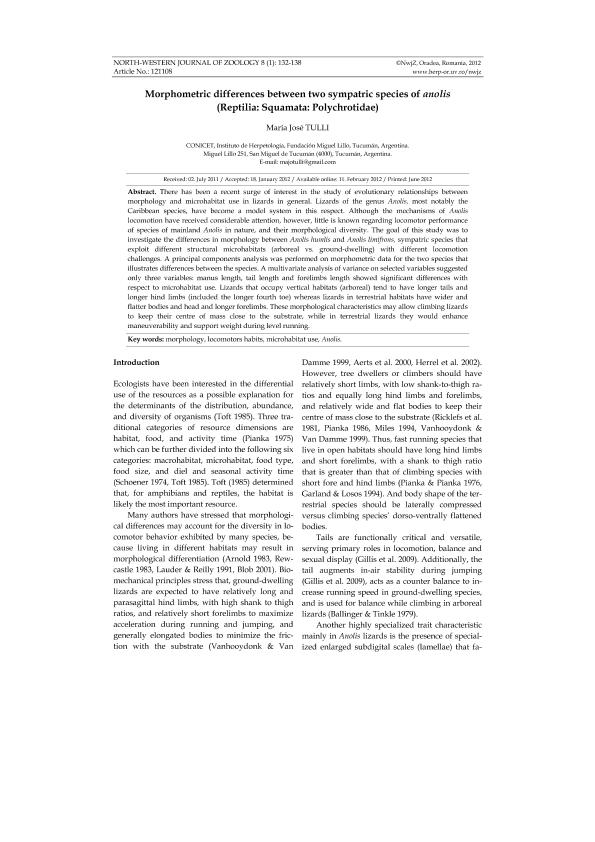Artículo
Morphometric differences between two sympatric species of anolis (Reptilia: Squamata: Polychrotidae)
Fecha de publicación:
06/2012
Editorial:
University of Oradea Publishing House
Revista:
North Western Journal of Zoology
ISSN:
1584-9074
e-ISSN:
1843-5629
Idioma:
Inglés
Tipo de recurso:
Artículo publicado
Clasificación temática:
Resumen
There has been a recent surge of interest in the study of evolutionary relationships between morphology and microhabitat use in lizards in general. Lizards of the genus Anolis, most notably the Caribbean species, have become a model system in this respect. Although the mechanisms of Anolis locomotion have received considerable attention, however, little is known regarding locomotor performance of species of mainland Anolis in nature, and their morphological diversity. The goal of this study was to investigate the differences in morphology between Anolis humlis and Anolis limifrons, sympatric species that exploit different structural microhabitats (arboreal vs. ground-dwelling) with different locomotion challenges. A principal components analysis was performed on morphometric data for the two species that illustrates differences between the species. A multivariate analysis of variance on selected variables suggested only three variables: manus length, tail length and forelimbs length showed significant differences with respect to microhabitat use. Lizards that occupy vertical habitats (arboreal) tend to have longer tails and longer hind limbs (included the longer fourth toe) whereas lizards in terrestrial habitats have wider and flatter bodies and head and longer forelimbs. These morphological characteristics may allow climbing lizards to keep their centre of mass close to the substrate, while in terrestrial lizards they would enhance maneuverability and support weight during level running.
Palabras clave:
Morphology
,
Locomotors Habits
,
Microhabitat Use
,
Anolis
Archivos asociados
Licencia
Identificadores
Colecciones
Articulos(CCT - NOA SUR)
Articulos de CTRO.CIENTIFICO TECNOL.CONICET - NOA SUR
Articulos de CTRO.CIENTIFICO TECNOL.CONICET - NOA SUR
Citación
Tulli, María José; Morphometric differences between two sympatric species of anolis (Reptilia: Squamata: Polychrotidae) ; University of Oradea Publishing House; North Western Journal of Zoology; 8; 1; 6-2012; 132-138
Compartir




